About implant solutions
Your shoulder is the most mobile joint in your body and we’re working to keep it that way. Stryker has worked for the past several decades to provide innovative bone-preserving solutions to improve the quality of life for patients worldwide. We have partnered with orthopaedic surgeons to place on more than 200,000 shoulder replacements.1

Blueprint
Blueprint is a software program that features three-dimensional (3D) pre-operative planning while generating the information required to produce PSI but does not feature 3D printing PSI for shoulder replacement. With the use of Blueprint, orthopaedic surgeons can develop personalized pre-operative 3D plans providing insight into each patient’s shoulder anatomy.
Learn more
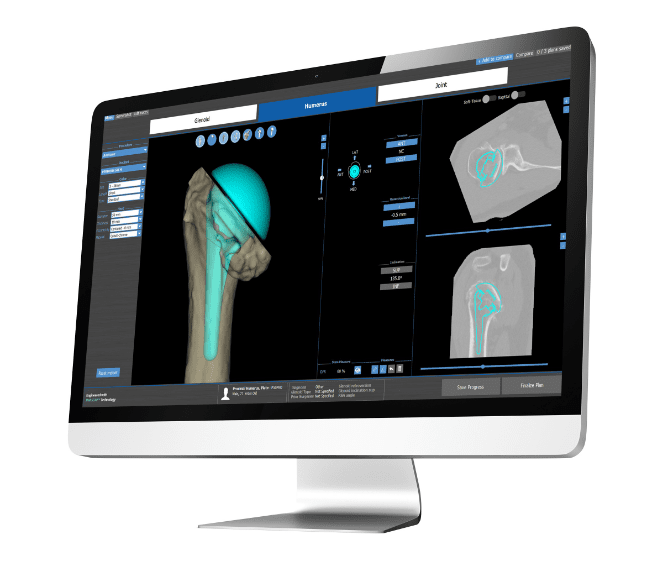
ReUnion Shoulder System
Stryker designed the ReUnion system to address some of the most common arthritic disorders affecting the shoulder.
Learn more
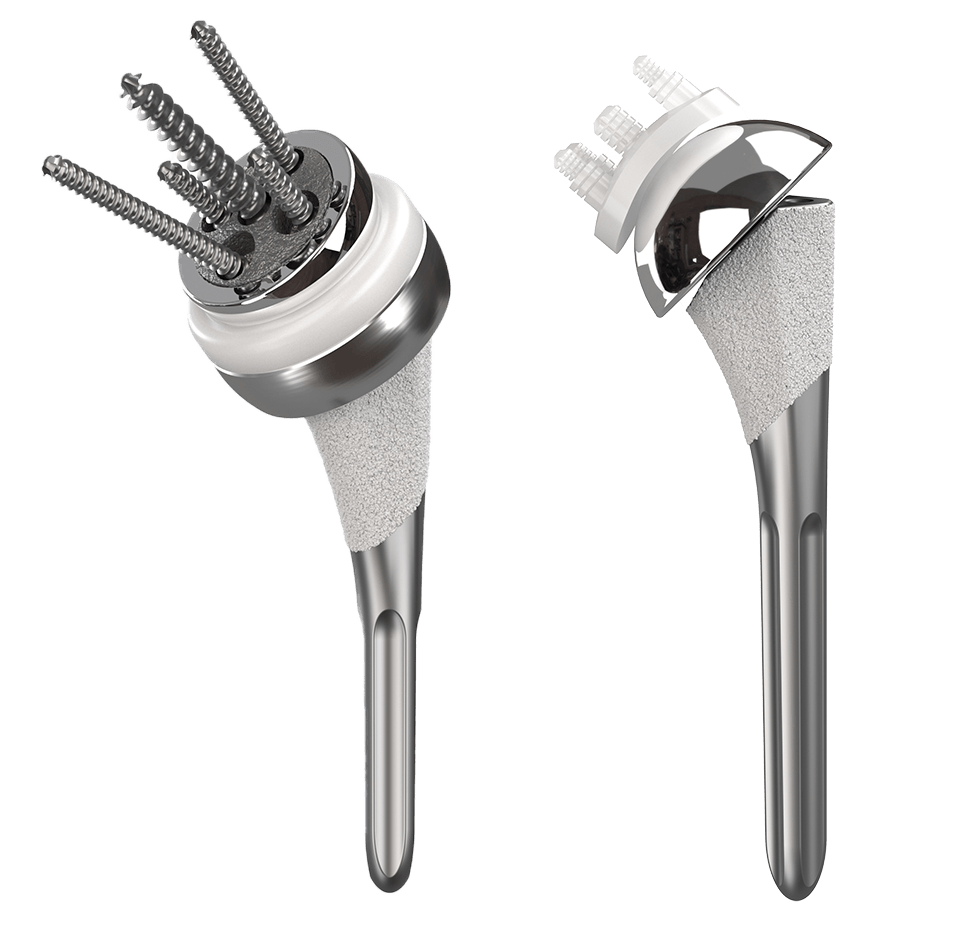
Tornier Flex Shoulder System
The two most common types of shoulder replacement are primary total shoulder replacement and reverse total shoulder replacement. Tornier Flex features a convertible short-stem and can be used for primary total or reverse total shoulder replacement.
Learn more
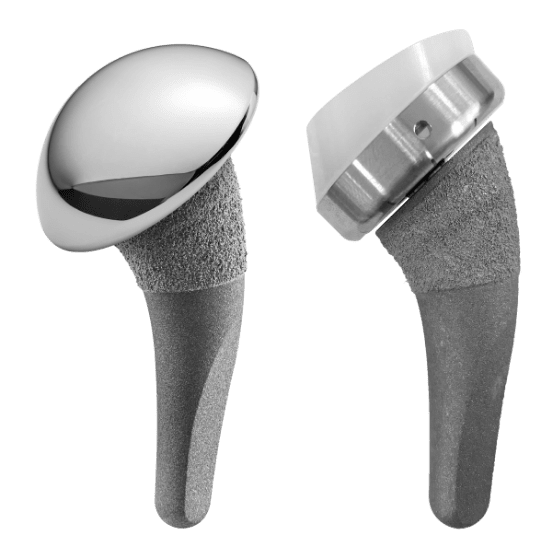
Tornier Simpliciti Shoulder System
Tornier Simpliciti Shoulder System is a stemless shoulder replacement system, featuring a “nucleus” instead of a long stem. A stemless implant is designed to preserve more bone than a traditional long-stemmed shoulder replacement implant.
Learn more
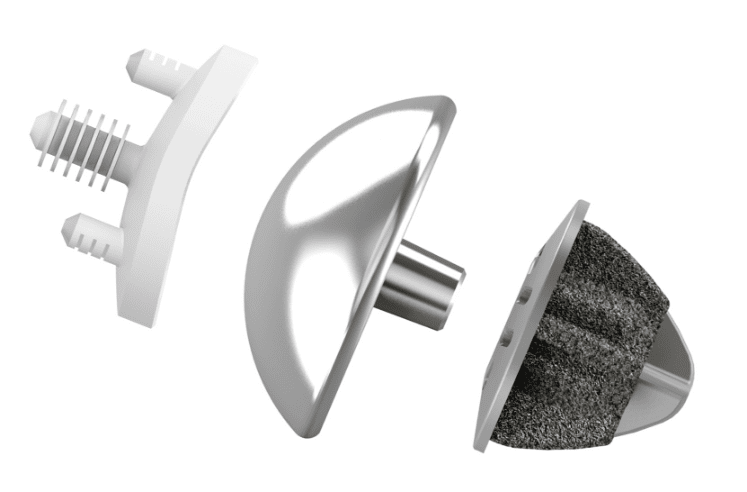
Shoulder iD Primary Reversed Glenoid
Stryker’s Shoulder iD implant is intended to replace the shoulder joint in order to relieve pain and to improve mobility in comparison to preoperative status. What makes the Shoulder iD unique is that it is made using your personal CT scan and advanced surgical planning software called Blueprint.
Learn more
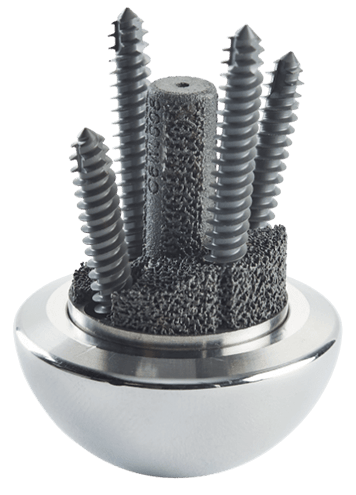
References:
- Data on file, Stryker Corporation.
Shoulder replacement
Anatomic total shoulder joint replacement is intended for use in individuals with painful, disabling joint disease of the shoulder resulting from: degenerative arthritis, rheumatoid arthritis or post-traumatic arthritis. Additional indications could include but not limited to: aseptic necrosis of the humeral head, proximal humeral fracture and revision of previous unsuccessful hemiarthroplasty or other procedures.
Reverse total shoulder joint replacement is intended for use in individuals with a functional deltoid muscle and with massive and non-repairable rotator cuff tear with pain disabled by: rheumatoid arthritis, non-inflammatory degenerative joint disease, humeral head fracture, traumatic arthritis and revision of devices if adequate bone stock remains.
Shoulder joint replacement surgery is not appropriate for patients with any active or suspected latent infection in or about the shoulder joint, any mental or neuromuscular disorder which would create an unacceptable risk of prosthesis in stability, prosthesis fixation failure or complications in postoperative care. Additionally, shoulder joint replacement surgery is not appropriate for patients whose anticipated activities would impose high stresses on the prosthesis and its fixation.
As with any surgery, shoulder joint replacement surgery has serious risks which include, but are not limited to, pain, infection, intraoperative complications, component wear, nerve damage, loosening of shoulder components and dislocation of the shoulder prosthesis.
Implant related risks which may lead to a revision or removal of the implant include being overweight, manual labor activities, some sports activities, patient age, activity level, medical conditions, alcohol or drug addiction, and mental disorders. Shoulder joint implants may not provide the same feel or performance characteristics experienced with a normal healthy joint
The information presented is for educational purposes only. Speak to your doctor to decide if joint replacement surgery is appropriate for you. Individual results vary and not all patients will return to the same activity level. The lifetime of any joint replacement is limited and depends on several factors like patient weight and activity level. Your doctor will counsel you about strategies to potentially prolong the lifetime of the device, including avoiding high-impact activities, as well as maintaining a healthy weight. It is important to closely follow your doctor’s instructions regarding post-surgery activity, treatment, and follow-up care. Ask your doctor if a joint replacement is right for you.
This site is for visitors from the United States.
Stryker Corporation or its divisions or other corporate affiliated entities own, use or have applied for the following trademarks or service marks: Blueprint, ReUnion, Simpliciti, Shoulder iD, Stryker, Tornier. All other trademarks are trademarks of their respective owners or holders.
Copyright © 2024 Stryker
OT-AWI-53 Oct-2023